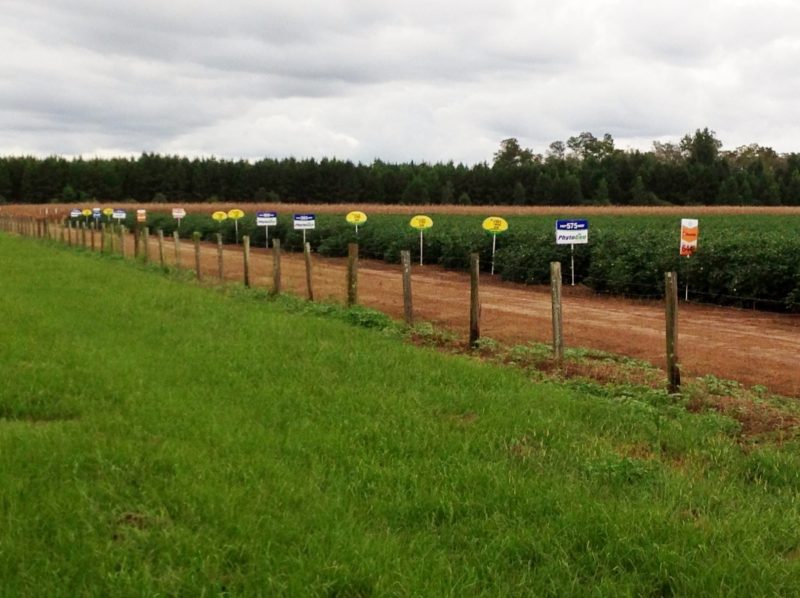Now is the time to start thinking (if you haven’t already) about planting decisions for the 2024 season. One of the most important decisions you can make is what variety to plant. There are so many varieties of cotton, corn, and soybeans available that it may seem like a difficult task to sort through them all to find ones that work well in our area. This is why the West Florida Research and Education Center (WFREC) performed a series of variety demonstrations. After several years of absence, we have rebooted these demonstrations. During the 2023 season, we looked at cotton, corn, and soybean varieties. The results have been published online at https://wfrec.ifas.ufl.edu/variety-testing/, but you can also use the headers below that are linked to the results for each specific crop test results from 2023.
–
Corn
In April, 19 varieties were planted in the large demonstration plot. The plots were harvested in August of 2023. Corn yields ranged from 172 to 222 bu/ac. The top 5 varieties were CP B5760tre117, PN 1847VYHR118, DK B68-35vt2p118, DK B70-45ribvt2p120, and CP B5497vt2p114. All 5 of these varieties yielded over 215 bu/ac in dryland conditions.
–
Cotton
In May, 18 varieties were planted in the large demonstration plot. The plots were harvested in October of 2023. Cotton yields were lower than usual due to lower than average rainfall for the growing season. The drought conditions led to potassium deficiency in all varieties. Yields ranged from 830 lb/ac to 1,452 lb/ac seed cotton. Gin turnout percentages were determined and recorded for each variety. Samples were sent to a lab to determine fiber quality as well. Stoneville and Deltapine had the top 2 varieties – ST5091B3FX and DP2012B3FX.
–
Soybean
In June, 7 varieties of soybeans were planted. These ranged in maturity from 6.2 to 7.2. The plot was harvested in December 2023. Yields were lower than usual due to drought conditions for much of the growing season. Yields were adjusted for moisture. Syngenta had the highest yielding variety (NK69-Q4XF).
Note: The results listed above are from one year at a single location and should be weighted accordingly. When seeking data on which to base planting decisions it is wise to considered data from several years and multiple locations before drawing conclusions. We are looking forward to once again performing these important demonstration plots in 2024 at WFREC.
–
You may also want to compare these results from trials in neighboring states:
Georgia Crop Variety Test Summaries
Alabama Crop Variety Test Summaries
Mississippi Crop Variety Test Summaries
Louisiana Crop Variety Trials
- Farm Well Summit – Growing a Healthy Agriculture Community – February 4 - January 17, 2025
- Spray Drone Regulations - July 16, 2024
- 2023 WFREC Crop Variety Trial Results - February 2, 2024

